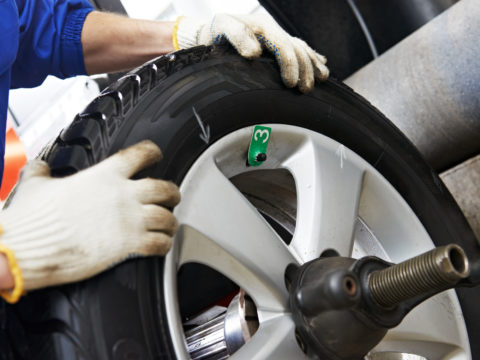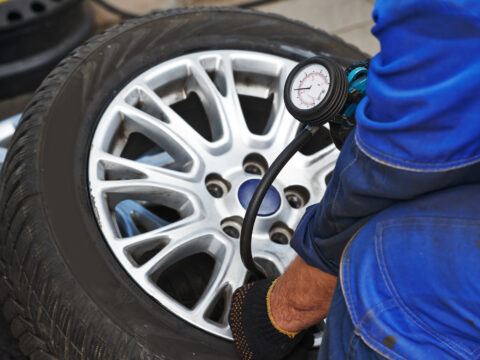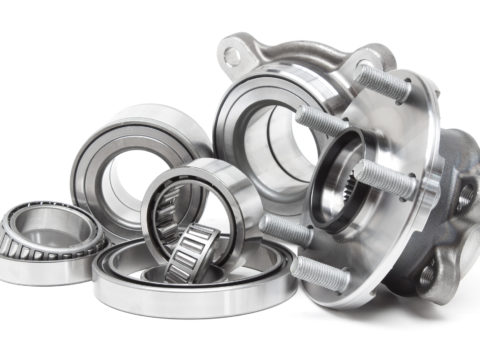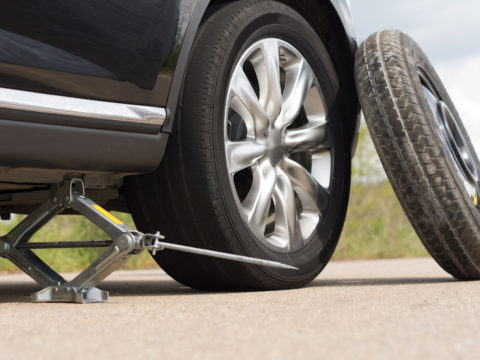Ignoring a broken pinion bearing risks damaging gears in the differential, including the pinion. Long-term, irreversible damage to the axle becomes a risk when the differential is damaged or broken.
If you think your vehicle has a bad pinion bearing, here is how to tell and what to do about it.
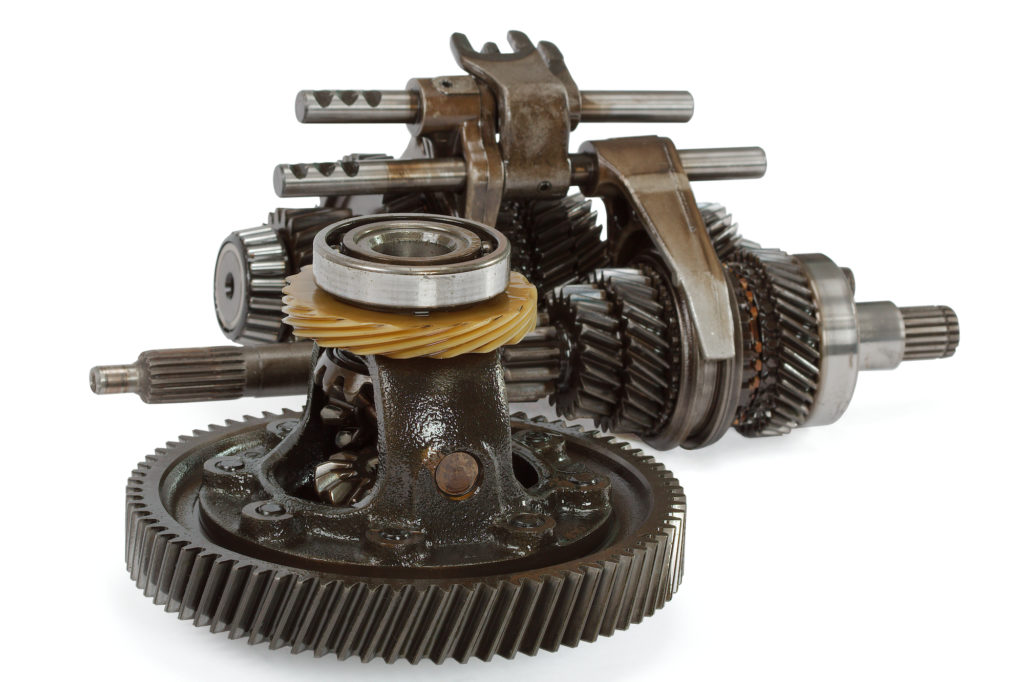
Contents
Pinion Bearing Basics
A pinion bearing helps regulate the movement of a pinion, which is a gear that plays a vital role in a differential. The purpose of a differential is to let vehicles corner more smoothly, safely, and comfortably while alleviating stress off the axle.
Gears in the differential allow the wheels to rotate individually instead of all the wheels rotating at the same speed. When cornering, internal wheels rotate faster than external wheels. The disparity in rotation speed creates an immense amount of stress across the entire axle.
If left alone, that stress can damage the axle. In the worst-case scenario, the stress can degrade the axle to the point that it starts to tear apart.
Where Is the Pinion Bearing Located on the Car?
The pinion bearing is a component in the differential of a vehicle. The differential is between the wheels, where the drive shave meets the axle. Depending on whether your vehicle is front, rear, or all-wheel drive, the differential is located on the front, rear, or both axles.
What Does the Pinion Bearing Do?
When you turn your vehicle, the inside wheels rotate faster than the outside. The differential compensates for that by allowing the wheels to rotate at the speeds they should naturally rotate, even if that is different from one side of the vehicle to the other.
What Causes Pinion Bearing Failure?
No part in a vehicle lasts forever. Most auto parts have a lifespan that experience has taught will generally be consistent across that part no matter who manufactures it. Pinion bearings are no different.
Here are the most common causes of pinion-bearing failure.
1) Lack of Adequate Lubrication
Inadequate lubrication accounts for the majority of pinion bearings that fail. There are multiple reasons a pinion bearing might not be getting enough lubrication, including:
- Degrading of bearing lubricant due to high temperatures
- Improper lubricant applied to the bearing
- Insufficient amounts of lubricant
- Leaking lubricant, such as when a pinion seal goes bad
Of those four possibilities, a lubricant leak is the most likely issue leading to a pinion bearing going bad. Lubricant leaks can occur if the pinion seal is damaged or the differential experienced trauma.
2) Corrosion
The undercarriage of any vehicle absorbs significant amounts of abuse. As part of a routine drive, the undercarriage experiences extreme weather and temperatures, road salt, collisions with multiple types of road hazards, etc. When a differential is damaged, corrosion can be one consequence.
It can come from exposure to toxic chemicals, acid, moisture, low-quality lubricant, exposure to salt, and much more. Depending on the type of corrosion, once it starts, it can be almost impossible to reverse. The only way to stop corrosion once it starts is to replace the affected part.
3) Contamination
Because the differential does take a lot of abuse, it gets exposed to many contaminants like dirt, sand, gravel, dust, mud, rocks, water, snow, ice, etc. Each can penetrate a damaged differential, and, in the cases of water, snow and ice, can bring with it particles of dirt and debris that can find their way into the pinion bearing.
If the exposure is limited, the possibility of contamination is limited. If, however, the differential is repeatedly exposed to contaminants, the damage can build over time. Eventually, the grit from those contaminants grind away at all the components in the differential, including the pinion bearings.
4) Poor Alignment
There are many ways a misalignment can occur, including improper installations, bent shafts, and other parts that are not aligned as they are supposed to be. When a misalignment occurs, it can stress the gears in the differential and put undue pressure on the pinion bearing.
5) Improper Mounting
Improper mounting happens in a variety of ways. One way to get an improper mount is by ignoring the prescribed directions. Another is by damaging parts during the mounting procedure.
If bearing parts are hammered into place, or forced to squeeze into an area the bearings do not fit, the bearings can be dented, chipped, or even broken.
6) Brinelling
Brinelling is the indentation of a bearing because it cannot sufficiently move to lubricate itself. If a pinion bearing cannot rotate properly, lubricant will not spread evenly. Uneven lubrication can lead to a bearing developing a dent.
7) Overheating
When the pinion bearing is not lubricated properly, excessive heat develops. Excessive heat will damage bearings and even alter their appearance or cause the bearings to seize.
Finally, one other cause of pinion-bearing failure is simple age. Pinion bearings do not last forever. If your vehicle has over 150,000 miles, the possibility of the pinion bearing degrading increases. Proper maintenance reduces the threat of pinion bearings becoming damaged because of age.
Bad Pinion Bearing Symptoms
When pinion bearings start to break down, several distinctive symptoms become prominent.
1) A Whirring Noise
A whirring noise when a vehicle accelerates is the signature symptom of a pinion bearing that is bad or is about to go break. The whirring noise will come and go at various speeds. The more worn the pinion bearings are, the more pronounced the whirring sound becomes.
2) Vibrations
As pinion bearings degrade, a vibration will develop, especially when turning or accelerating. If your vehicle has not collided with anything or any other situation that could knock it out of alignment and suddenly starts to vibrate, sometimes violently, inspect the pinion bearing.
3) Gear Grinding
When the gears in a differential are grinding, they produce a humming noise. When the damage gets worse, the grinding becomes pronounced.
4) Tire Damage
When a pinion bearing goes, it almost always leads to tire damage if not addressed quickly. Most of the tire damage happens when the vehicle is taking a corner. Usually, the damage occurs to the inner tire first.
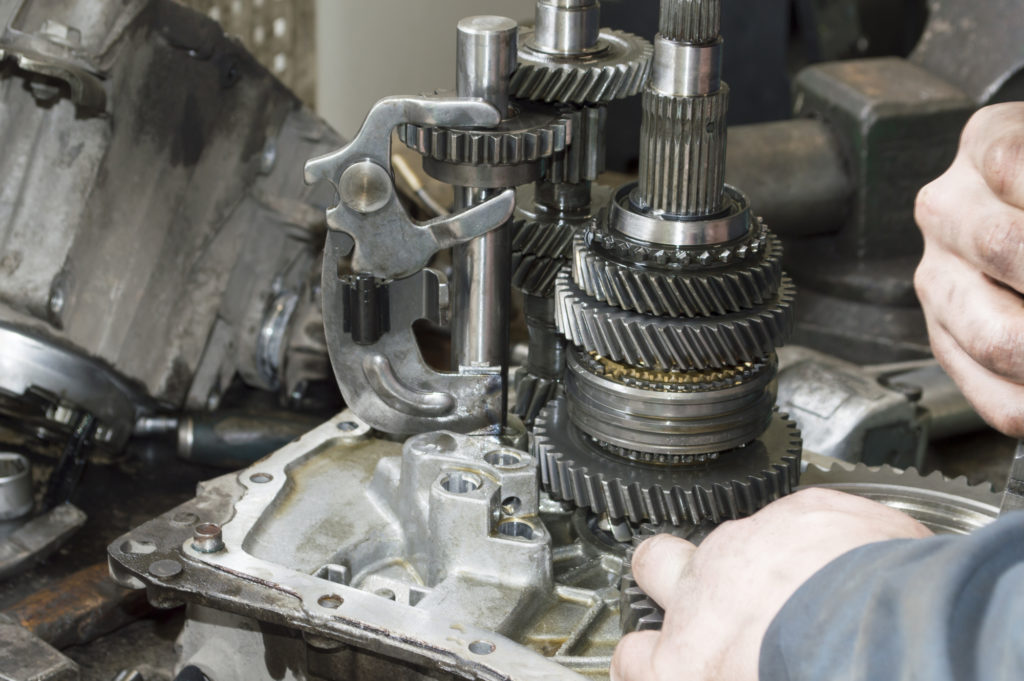
How Do You Check a Pinion Bearing?
It is difficult to check on a pinion bearing on your own if you do not know what you are doing. Even using a standard jack or borrowing a lift does not make the process of physically checking the pinion bearing easier or quicker.
Whether you want to try and DIY the solution or have your mechanic work on it, you still want your mechanic to verify your suspicions that you are dealing with a bad pinion bearing. Swapping out pinion bearings is not a complicated job, but you want to make sure that is the problem that needs your attention.
Since the only way to verify a pinion bearing needs replacement is to pull the differential apart, you will have to rely on your observation and critical thinking skills. Your goal is to gather as much information as possible and present that information to our mechanic.
If you are going the DIY route, using that same process will help you determine you have a bad pinion bearing without yanking your differential apart. Here is the process you need to follow.
Tools and Equipment Needed
The following are the tools you need to make a reasonably accurate assessment of the status of your pinion bearings.
- Your observation skills, including fresh eyes, nose, ears, and touch
- A flashlight
- A lift to raise your vehicle
- Rags
- Mat to document any leaks
Step 1: Drive Your Vehicle
Take your vehicle for a ride and drive at different speeds. Stop and go several times. Accelerate and then decelerate. Turn the vehicle several times in each direction while moving forward and in reverse. While you are doing it, pay attention to how your vehicle responds.
Step 2: Use Your Observation Skills
While driving your vehicle, with all sounds off (no radio, heat or AC, other people talking, etc.) observe whether your vehicle:
- Is making a whirring sound, particularly when accelerating
- Has a grinding noise or the tell-tale hum
- Develops an erratic but predictable vibration
Step 3: Inspect Your tires
After driving your vehicle, take a moment and inspect your tires. Ask yourself the following:
- Does the inside look more worn?
- Is one side more worn than the other?
- Is any of the wear and tear “premature” given the age of your tires and the mileage on them?
Step 4: Look for Leaks
Place the mat under your differentials and let it sit for a night. In the morning, inspect the mat for drippings from the differential.
Get under the vehicle and look at either end of the differential. Are there signs of streaking from leaking liquids that are coming out when the vehicle is driven?
After you have done all that, document your findings and take your vehicle in for a mechanic to look at it. Do not go with just your estimate unless you happen to be a mechanic or are very familiar with vehicles. You do not, as mentioned, want to spend money on fixing a pinion bearing that is not broken while the part that is broken remains unfixed.
So, What Happens When a Pinion Bearing Goes Bad?
Several outcomes can arise from having a bad pinion bearing. They are:
- Your vehicle starts making humming and whirring noises
- Your vehicle develops a vibration that can pose a driving hazard
- Your vehicle struggles around corners and becomes a lot less comfortable to ride in
- The stress on your axle becomes acute and you end up needing a bunch of undercarriage and wheel work
The first two will happen as soon as the bearing starts to rapidly deteriorate. The last two will happen if you ignore the issue.
Recommended Pinion Bearing Kits
If you are mechanically inclined and familiar with vehicles, you can swap out your pinion bearings. If you are not that mechanically inclined or have never worked on a vehicle, trying to DIY a pinion-bearing swap is not recommended.
The following are some general recommendations for pinion bearing kits:
Yukon Gear and Axle Differential Bearing Kit
Yukon is a trusted name with a reputation for quality products and excellent customer service. Make sure you check to see if the kit you are interested in buying will fit your vehicle.
USA Standard Gear Differential Rebuild Kit
This is also a generic pinion bearing kit. USA Standard advertises that their kit utilizes Koyo bearings and races. You will have to research the kit that is right for your vehicle.
Motive Gear Master Bearing Kit with Timken Bearings
Any of these kits are assured to be of high quality. Timken bearings are highly recommended. As with any of these kits, check and make sure it fits your vehicle.
Vehicle Manufacturer’s Recommendations
These will tend to be more expensive but often have better warranties. The other advantage to using a manufacturer’s recommendation is that you are assured the part will fit.
Dorman Differential Bearing Kit
Dorman is a respected name. They specialize in “new to aftermarket” products.

